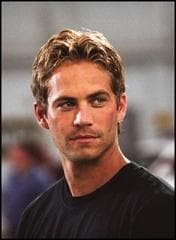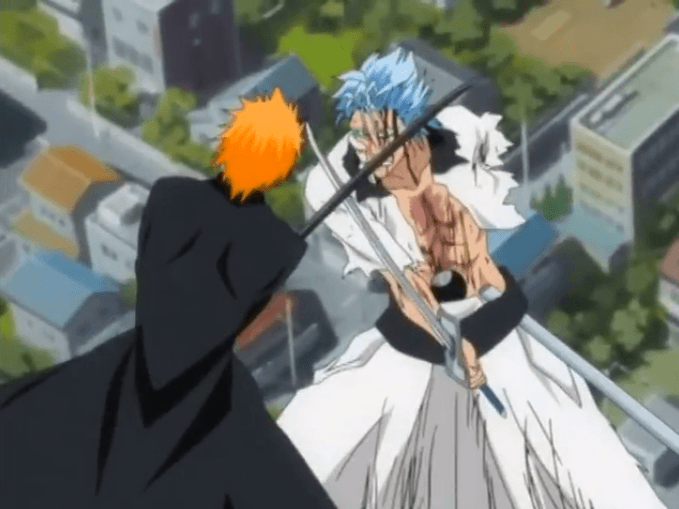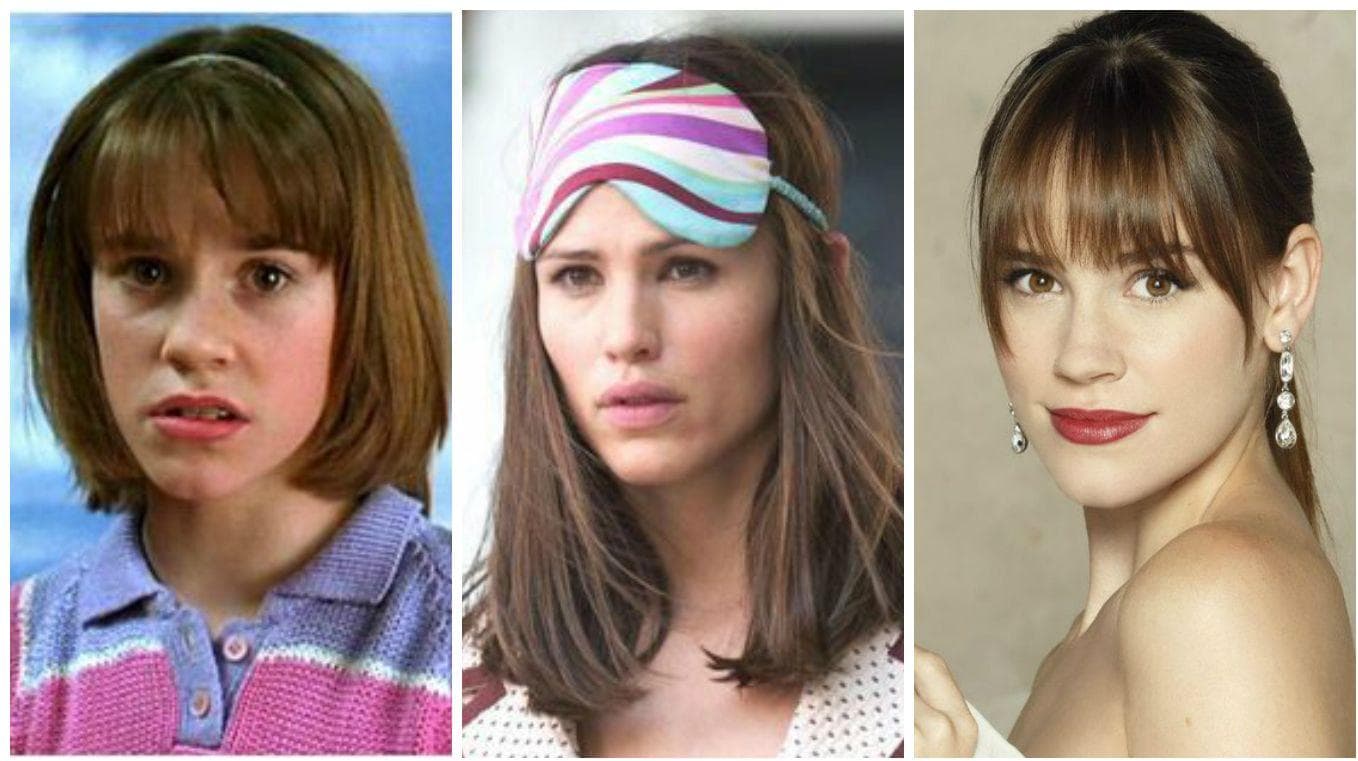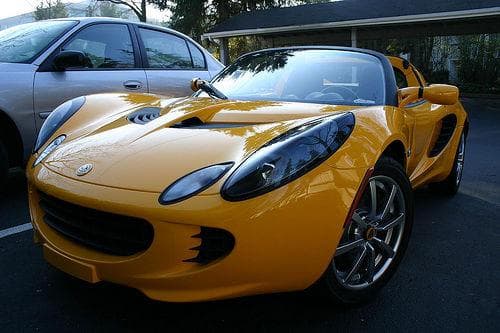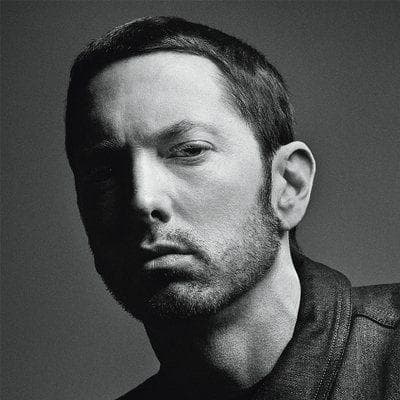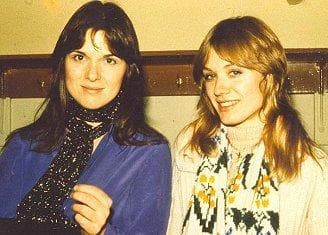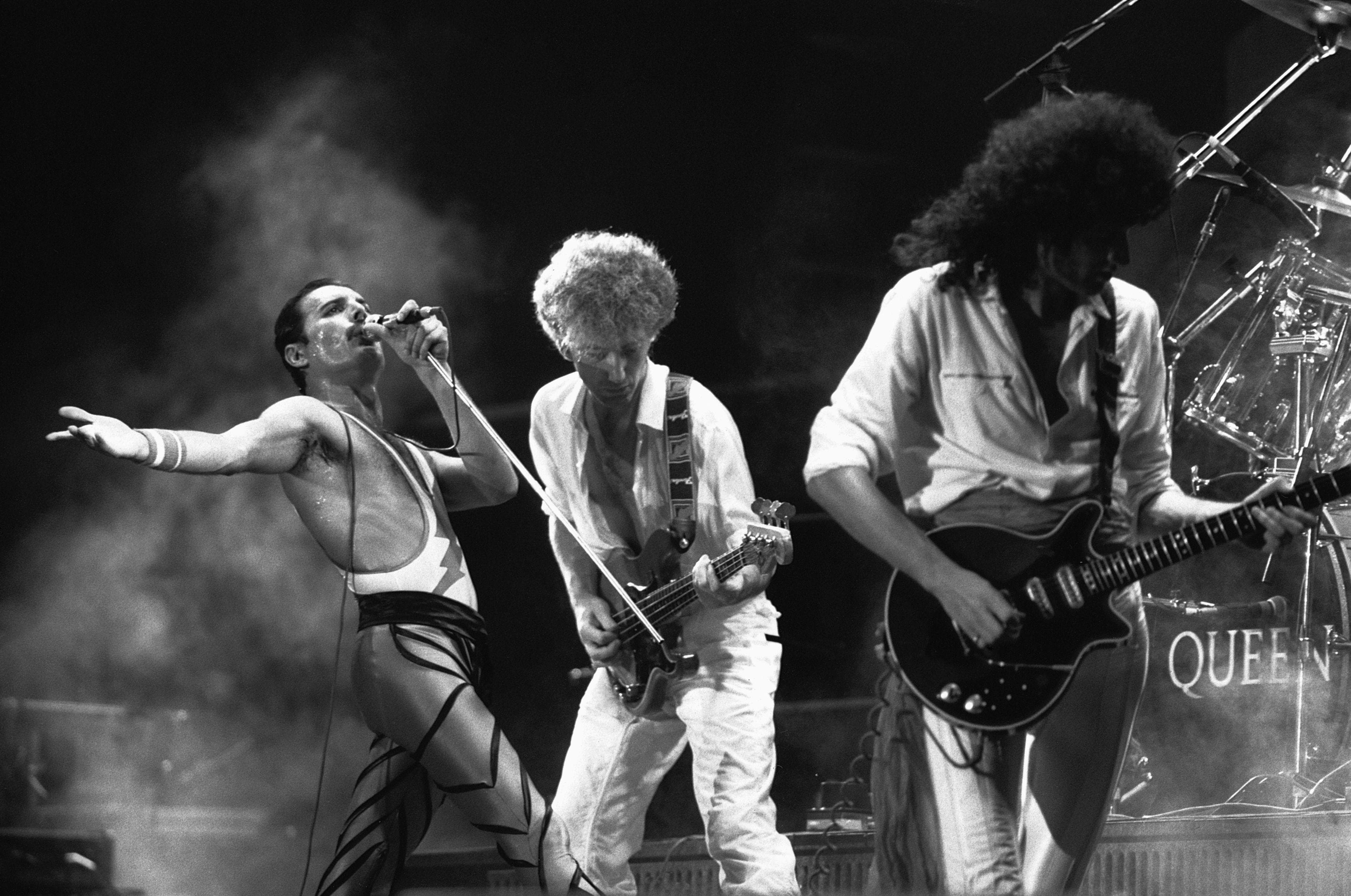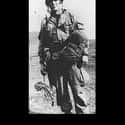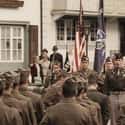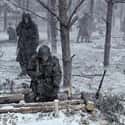-
(#1) Damian Lewis Became Good Friends With The Real Captain Winters
Cast as Captain Richard Winters, actor Damian Lewis prepared for the role by getting to know his real-life counterpart. Lewis visited Winters at the veteran's home in Pennsylvania, ultimately befriending the man he played onscreen.
While with Winters, Lewis gained access to his diaries, but found it difficult to get clear insight into exactly how Winters felt during his time in the service. Lewis, who called Winters a "total soldier," described most of what Winters told him as "practical memories of operational detail," a testament to the man's leadership skills and demonstrative of his humility and confidence.
Lewis and Winters maintained a relationship, continuing to write one another, but Lewis was unable to attend Winters's funeral when he passed away in 2011.
The friendship between Lewis and Winters wasn't the only bond struck up between actors and the soldiers they portrayed. In conversation with William Guarnere, actor Frank John Hughes was informed that his foxhole digging practice had been in vain, told by the veteran, "Kid, I was a staff sergeant. We didn’t dig foxholes. You have other people to do dat for ya, so don’t do dat anymore."
Donnie Wahlberg, who played Carwood Lipton, recalled, "The real Lip and I are pretty close.... He definitely sized me up and put me through it a bit at first. He asked how old I was. I said, 'Er, 36.' He was 22 when he served." (Note: Wahlberg was actually 30 at the time of filming, and Lipton was 24 when he went to Europe.)
-
(#2) Each Episode Cost Nearly 10 Times More Than Any Other TV Drama
The amount of money needed to make Band of Brothers - to essentially recreate aspects of the European theater - rivaled budgets for actual military combat. When executive producers Tom Hanks and Steven Spielberg went to HBO, they presented the network with an estimated $125 million budget. For the ten-part miniseries, this worked out to roughly $12 million per hour of programming, more than triple that spent on television dramas at the time.
"I'm not saying they didn't bat an eye," Hanks told The New York Times. "Oh, they did bat an eye. But the reality is this was expensive. You had to have deep pockets. And HBO has deep pockets." HBO was willing to take the risk and allocate necessary funds to the project, even adding an additional $15 million for marketing.
-
(#3) The Cast Reunites Every Year On The Anniversary Of Their Boot Camp
To prepare for the show, the main cast of Band of Brothers completed a 10-day bootcamp (actor Ron Livingston, who played Captain Lewis Nixon III, kept a video diary of the experience.)
Forty actors participated in rigorous physical training at the direction of Captain Dale Dye. During the 18-hour days, cast members were called only by the names of their characters.
Bootcamp began with a morning runs at 6 am, followed by time dedicated to learning general orders, familiarization with weapons and munitions, map and compass training, and comparable military-based exercises. During the camp, the actors took part in activities that would ultimately give them the skills to play paratroopers on screen.
Nights were spent on guard duty, during which the actors experienced sleep deprivation, while the overall intent of the experience was to build camaraderie among the group and create relationships that corresponded to real emotional dynamics in combat.
The bootcamp left an indelible mark on those who participated. After the series was completed, cast member Michael Cudlitz (who played Denver "Bull" Randleman) began hosting reunions of sort at his home. Reportedly, as of 2011, "People fly in from all over... Even now, I don’t think there’s anyone that wouldn’t drop anything to help each other out, and that’s a rare thing in Hollywood."
-
(#4) Several Actors Who Became Stars Didn’t Make The Cut
The cast of Band of Brothers is rife with familiar faces - and numerous stars in the making. Future heavyweights like James McAvoy and Tom Hardy appear in relatively small roles, while comedic performers like David Schwimmer expanded his acting repertoire by taking a more dramatic role of Captain Herbert Sobel.
Meg Liberman, who was in charge of casting for Band of Brothers, recalled her first encounter with Damian Lewis, Lewis was so good in his audition that Liberman shifted from casting an American for the role of Dick Winters, opting for the Brit instead. "He just felt like a leader," Liberman explained, "He felt like the guy that these men would do anything for. And it was very clear to me the minute we all sat down that he was the guy."
In a process full of "discoveries," Liberman also passed on some actors who would later become big names in Hollywood. Norman Reedus, a staple on The Walking Dead, did not get cast on the show, nor did Jason Schwartzman and Peter Sarsgaard.
In another instance, one unnamed actor who almost was cast bowed out after hearing about the pre-production bootcamp.
-
(#5) A Real Veteran And The Cast’s Drill Instructor Played Colonel Sink
Captain Dale Dye, the man who "allowed himself to be the common enemy" during the Band of Brothers' pre-shoot bootcamp, was a veteran of the and Marine Corp, serving as a Marine combat correspondent in Vietnam. After he retired from military service in 1984, began to consult for movies and television shows, later founding Warriors, Inc., which provided training programs to, "prepare the actors for the reality of serving in the military" and portray them on screen.
Dye watched on as the cast built "bonds early on in boot camp." After completing that task successfully, Dye continued to work as a consultant, staging the Battle of Bastogne in the Ardennes Forest for the show.
Dye also found himself cast as in Band of Brothers as Colonel Robert Sink, commander of the 506th Parachute Infantry Regiment of the 101st Airborn Division. Dye continued working behind and in front of the camera after Band of Brothers, appearing numerous movies and television series. He even served as the voice of Colonel Sink in the 2007 video game Brothers in Arms: Hell's Highway.
-
(#6) 12 Different Towns Are Actually All The Same Set In England
Band of Brothers was shot over eight months in 2000, most of which found the cast and crew filming in Hertfordshire, England. Exterior sets were created on 12 acres of land - a small section of 1,100 acre lot at the Hatfield Aerodrome near the town of Hatfield.
The various towns and villages in which Easy Company finds itself throughout the show were, in fact, one village set that was reconfigured and redressed to represent towns in several countries. Recreated towns included Bastogne, Belgium; Eindhoven, Netherlands; and Carentan, France.
A nearly mile-long river was also created at Hatfield, while Hambledon in Buckinghamshire and an airfield in Essex were used for some scenes in the show.
-
(#7) The First Three Episodes Used More Pyrotechnics Than ‘Saving Private Ryan’
Episodes one, two, and three of Band of Brothers introduced viewers to Easy Company as they underwent jump training in Georgia, landed on the beaches of Normandy on D-Day, and fought at the battles of Carentan and Bloody Gulch in 1944.
Given the events depicted in these first three episodes, the show needed to a massive amount of pyrotechnics to recreate explosions, smoke, and all-things fire. A single day of shooting could require about 14,000 rounds of ammunition and countless air mortars subbed in for actual bombs.
By the time the first three episodes had been shot, Band of Brothers had already used more pyrotechnics than were used in the entire making of Saving Private Ryan, the previous Hanks/Spielberg WW2 collaboration.
-
(#8) The Ardennes Forest Was An Indoor Set In An Aircraft Hangar
While an entire village was constructed at the Hatfield Aerodrome, a nearby hangar served as home to a mock version of the Ardennes Forest. As the site of the Battle of the Bulge, fought during the winter of 1944 and 1945, the Ardennes Forest in Band of Brothers necessarily needed to appear as cold and bleak as it had during WW2.
Building the Ardennes Forest meant bringing in hundreds of pine trees. Additional trees were made by the props department, crafting foam, cardboard, and fiberglass into trees that could be moved and even destroyed onscreen.
In order to create the winter, the set-crew on Band of Brothers used snow made out of paper - so it wouldn't melt under while filming. In the end, more than 300,000 pounds of paper were used.
-
(#9) Jeep Provided Hundreds Of Vehicles And Promotion
In making Band of Brothers, HBO struck a mutually beneficial arrangement with Jeep. Product placement by the network and a large marketing campaign on the part of the vehicle's parent company, Daimler Chrysler, doubled the media exposure for both in the build up to and during broadcast of the show.
HBO's marketing campaign incorporated the Jeep logo. Advertisements and media boasted, "The Jeep brand is honored to celebrate the men of Easy Company... And all those who served in WWII." Jeff Bell, vice president for marketing at Daimler Chrysler at the time, indicated, "There are over 1,000 prominent appearances by Jeeps in the 10 hours."
For their part, Daimler Chrysler and Jeep invested in six commercials set to air on network television during the run of the show. The commercials incorporated footage from the miniseries, shots of Utah Beach in Normandy, and historic and contemporary Jeeps alike.
While Jeep was featured heavily, the inclusion of their products, according to HBO marketing executive Eric Kessler, "organic to the story, and integral part of the war." This is true, given that the vehicles were widely used by US forces starting in 1941.
-
(#10) Tom Hanks Acknowledged Small Historical Inconsistencies
After Band of Brothers premiered in 2001, executive producer and director of one episode Tom Hanks weighed in on some of the inaccuracies and inconsistencies on the show. Hanks explained,
We've made history fit onto our screens... We had to condense down a vast number of characters, fold other people's experiences into 10 or 15 people, have people saying and doing things others said or did. We had people take off their helmets to identify them, when they would never have done so in combat. But I still think it is three or four times more accurate than most films like this.
Easy Company veteran Carwood Lipton agreed, noting that soldiers in battle would have been more spaced out than how they were staged onscreen. To Lipton, that was of minor consequence, a necessity to get the action on a screen.
-
(#11) Easy Company Veterans Returned To France For The Series Premiere
The series chronicling the lives and actions of the men who served in Easy Company invited veterans from the outfit to the premier in 2001. Held at Utah Beach in Normandy - where Easy Company landed on June 6, 1944 (D-Day) - the premiere reunited nearly all of the remaining members of the group - flown to Paris via a plane chartered by HBO in partnership with American Airlines. Veterans unable to make the trip to Normandy were transported to screenings in the United States.
Attendees met their on-screen counterparts and took part in a memorial service prior to watching part of the 10-episode series, all of which took place amid temporary tents and screens built during the month prior to the debut.
After the premiere, Easy Company veterans offered their reactions to what they'd seen. Edward "Babe" Heffron, played by Robin Laing, thought, "It captures what we went through. The scene in the plane before we jumped, it was just like that." William Guarnere, depicted by Frank John Hughes, acknowledged, "You've got 45 guys here, and everyone will have seen the war from a different point of view. You can't be perfect. But I'd say it is as accurate as possible."
-
(#12) There Were 500 Speaking Roles And Thousands Of Extras
The numbers associated with Band of Brothers - extremely high when it came to budget - were equally lofty when it came to almost every aspect of production. To make Band of Brothers, eight directors and seven writers worked with roughly 500 members of the cast who had speaking parts.
Extras exceeded 10,000 in number, while costumers acquired 2,000 military uniforms (German and American) alongside 500 pairs of Corcoran jump boots - worn by paratroopers in the 1940s. Combat scenes required 700 authentic, period-specific weapons (and 400 props), ranging from rifles to pistols to machine guns.
To ensure authenticity, the costume department also had 12,000 vintage outfits worn by actors playing civilians.
In contrast to the historical items used, production also required extensive computer-generated elements. More than 700 visual effects shots were created for Band of Brothers and, at times, the color of the show was digitally adjusted to reflect the type of image captured by a camera during the 1940s.
New Random Displays Display All By Ranking
About This Tool
Our data comes from Ranker, If you want to participate in the ranking of items displayed on this page, please click here.

